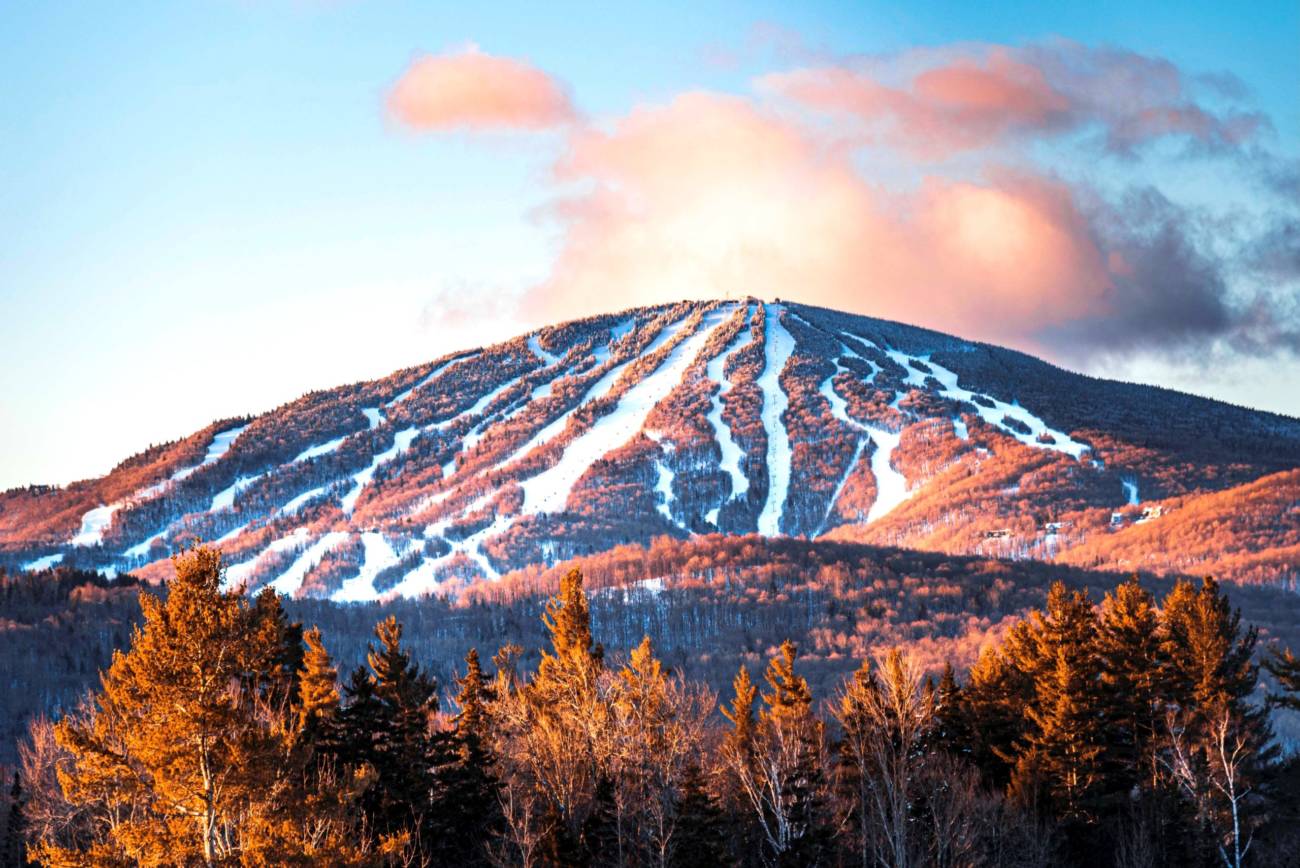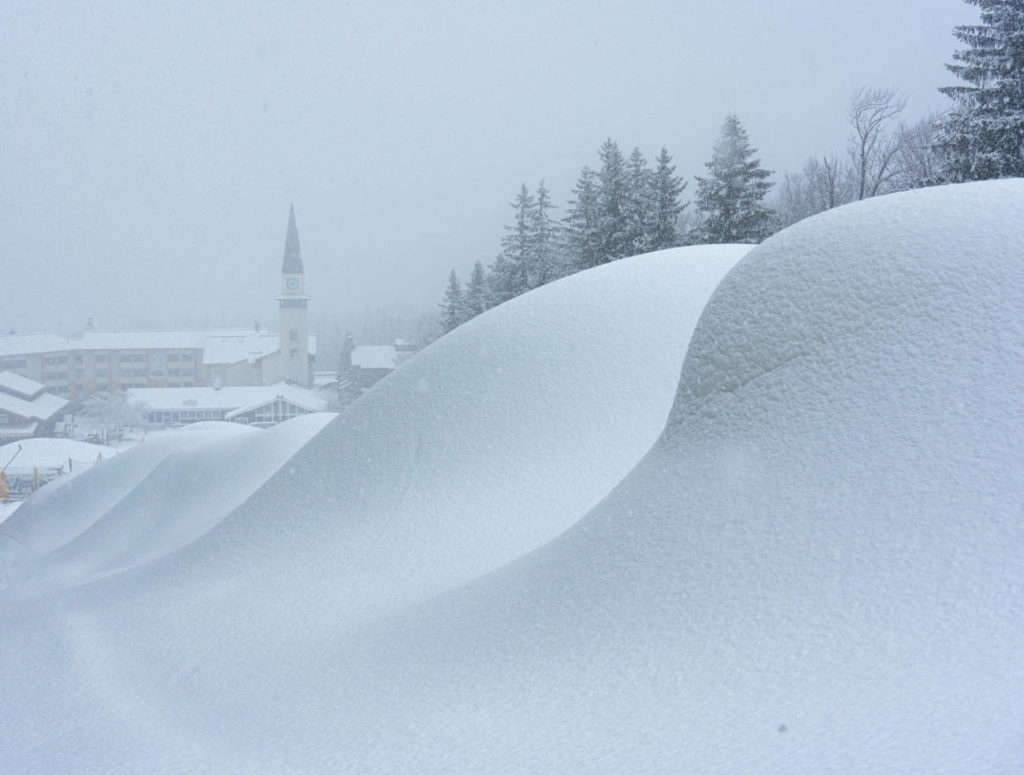
If you subscribe to the Stratton Instagram page, you may have seen our stories at the start of our snowmaking process for winter 2021 asking followers to submit their questions on snowmaking and the process here at Stratton Mountain.
A huge thanks to all of those who submitted questions. With lots of questions asked, we decided to sit down with our Mountain Operations department to answer all questions that came in. Read below for the answers about the snowmaking process that have always been on your mind with riding the chair in between runs. Thanks, Craig and Kevin for answering these with us!
What ingredients do you need to successfully snow make?
It’s a recipe that has made everyone’s favorite winter dish for many years. Air. Water. Temperature.
How do you keep the water from freezing in the pipes? Why doesn’t it freeze?
Water doesn’t freeze in snowmaking pipes because the pipes are actually an open circuit. Pressure in these pipes is high, and the water is always moving throughout. While some sections of the pipe loop to keep water moving and the guns supplied, at the termination of each zone of pipes there is also a drain to allow unused water to escape. This allows new water to enter. This open circuit, and pressure, keep the water moving at all times, so freezing doesn’t occur. This is a similar thought as to why a pond will freeze well before a moving stream, or river.
What is the conversion rate of water to snow?
As with all snowmaking measurements, it is dependent on temperatures. Typically, under ideal snowmaking conditions, 160,000 gallons of water, will make 1-acre-foot of snow. Roughly, that covers about a football field in one foot of snow, with 160,000 gallons of water used. This number can fluctuate to more, or less snow, with the given temperature, wind, and other additional factors.

What pressure is the water and air mixture?
Water enters the snowmaking pipes through water pumps, as it enters at 1000psi. Air is added to the system through compressors at 100psi.
What is the water source for snowmaking? How big is the snowmaking pond?
Stratton has three main water sources for our snowmaking system. A summertime favorite, the snowmaking pond on Kendall Farm Rd holds approximately 150 million gallons of water. Stratton Pond, the large body of water at the golf course, holds approximately 80 million gallons of water, while the third pond on North Brookwood holds about 20 million gallons of water.
Is there a filter at the reservoir that filters out the gunk?
Each water source that the snowmaking system draws water from has a series of grates, and screens at the bottom of the body of water. Water is filtered multiple times during its transport. In addition, each individual snow gun also has filtering screens on it to filter out any impurities in the water. From beginning to end, the water is filtered multiple times.
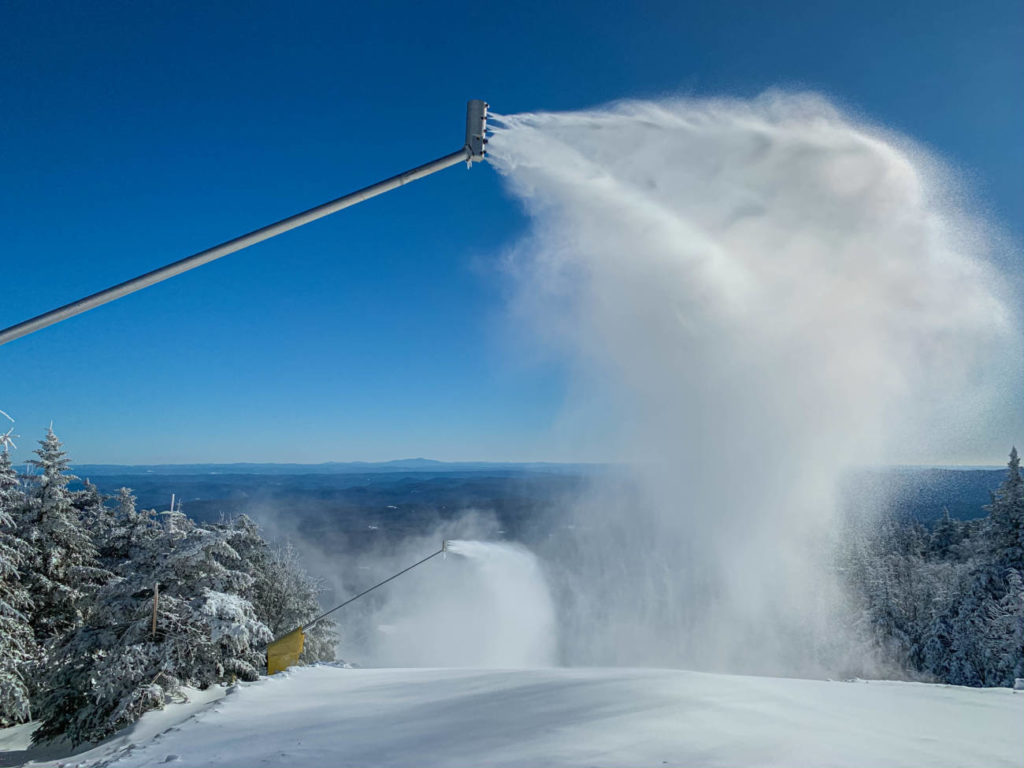
Do the water droplets that come out of the gun instantly “snow”? Why do you shoot the snow so high? I feel like most of it gets blown away by the wind.
The moment the “snow” leaves the nozzle of the snow gun, it is still in a liquid form. It is still water. To this point, the only ingredients have been air and water. Introducing our third ingredient to this wintery recipe, temperature. As water droplets are blown out of the nozzle, they reduce down to very small particles, almost single H2O molecules. This small particle now needs to freeze, and the secret to this, hangtime.
The longer the water particles can be suspended in the air, and the colder the temperatures, the better the freeze and crystalization will be. It’s the difference between mid-winter skiing vs spring skiing, on a microscale. The water content of the snow will vary. With cold temperatures and good hangtime, the more time the snow has to freeze and to crystalize. Creating a better product, and better skiing and riding conditions.
SNOWMAKING TEMPERATURES
What are the highest and lowest temps you can make snow?
To get scientific right off the bat, snowmakers spend most of their time looking at the wet-bulb temperature, as opposed to just temperature itself. As defined by Science Direct’s website, “Wet-bulb temperature is the lowest temperature to which air can be cooled by the evaporation of water into the air at a constant pressure. It is therefore measured by wrapping a wet wick around the bulb of a thermometer and the measured temperature corresponds to the wet-bulb temperature.”
As far as we are concerned, it is a measure of temperature, that also takes relative humidity into account.
Now that that’s out of the way, where do we want our wet-bulb temperature to be to blow snow?
Ideal snowmaking temperatures begin at about 26F, this is where efficiency starts but is not maximized. “Everyone has their own favorite temperatures.” says Stratton’s Snowmaking Manager, Kevin Booth, “I love to operate at, 10 degrees, no wind, and a full moon so we can navigate the mountain easier. But we can’t get too picky now” Efficiently in snowmaking, at Stratton, hits its peak at 8F to 12F wet bulb. This is when production and snow quality are at their peak, correlating to what snowmakers would consider “white gold.”
Is it ever too cold to make snow?
While it’s never too cold to make snow, remember the pipes don’t freeze, and if water exits the gun as an H2O molecule, surely it’ll freeze into snow. However, you do lose efficiency of production when temperatures become too cold.
Have you ever seen someone throw a pot of boiling water in subzero temperatures?
When temperatures become too cold, efficiency is lost. Water freezes very quickly as snow particles, then these particles actually begin to evaporate and turn into gas instead of a solid snow crystal (even when they’re boiling hot.)
This is the process known as sublimation, going directly from a solid state to a gaseous state. When this happens, the water vapor is lost to the atmosphere, instead of becoming a solid snowflake that lands on the ground, and eventually under your ski, or snowboard. So is it ever too cold to make snow? No. But it does become inefficient at very low temperatures.
SNOW PRODUCTION
How deep do you make snow to be able to open?
For Opening Day, and to open new trails, there usually needs to be a base depth of about 24 inches of snow. While this may vary in spots, 24 inches of snow would be an average base depth needed to open. Some spots may only have 12 inches, while others could be under 3 feet of early-season snow. A lot of this depends on the terrain underneath and building up a greater depth in high traffic areas, where lots of skiers and snowboarders will be.
Have you started snowmaking?
Snowmaking has begun as we prepare for the 2021/2022 season.
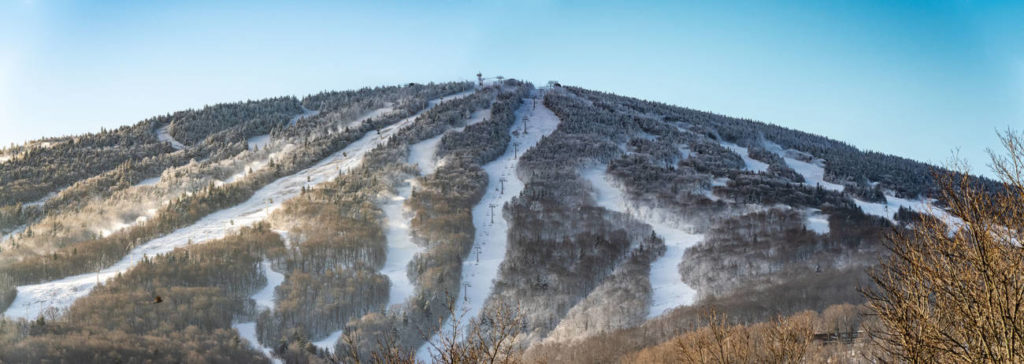
SNOWGUNS & EQUIPMENT
How much snowmaking pipe is there?
There are about 75 miles of snowmaking pipe throughout the resort. If all the pipe were to be straightened out, you would be driving next to the line of snowmaking pipe for over an hour on the highway at 60mph in your car!
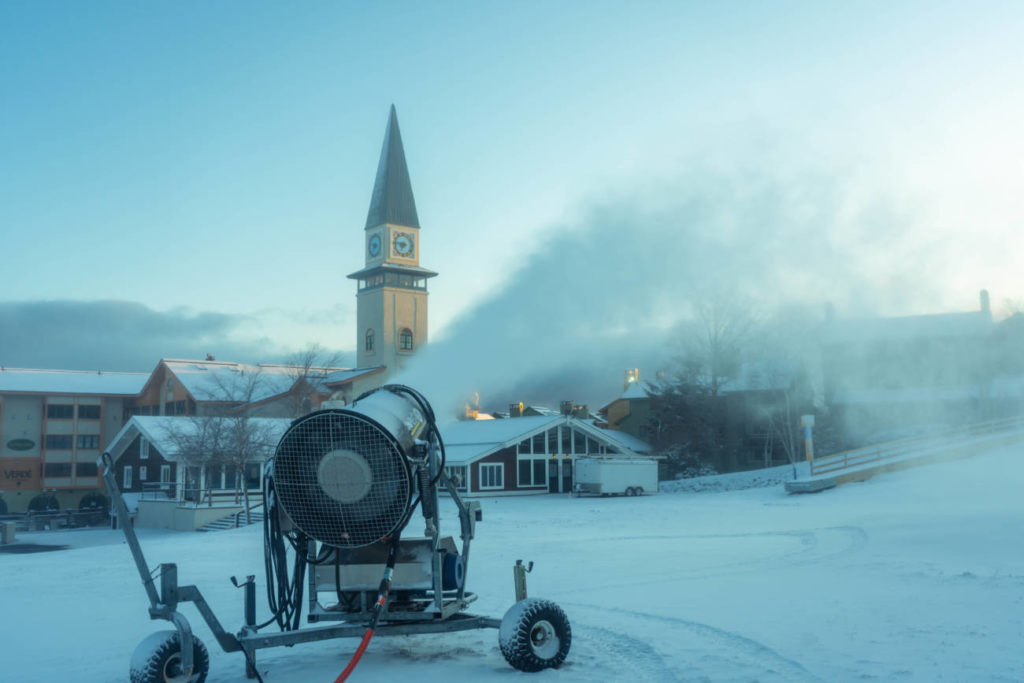
Which guns make the most snow? Do different guns serve different purposes?
Stratton has a variety of different guns. While in the main base area or when riding American Express and looking where Betwixt and Lower Standard meet, you will see one of the large blue fan guns (pictured above). These are the biggest and most productive guns that Stratton has. Fan guns are placed in high traffic areas, or sections like the base area, that need a large amount of snow, but are not lined with snow guns.
Next would be the high-efficient HKD tower guns that you see lining the west side of most trails. These are the “regulars” the workhorses that get utilized all season long, as they are set up and always ready to go. Finally, the ground guns are used for wider trails, areas that need precision snowmaking, or trails that need an extra boost than just the tower guns.
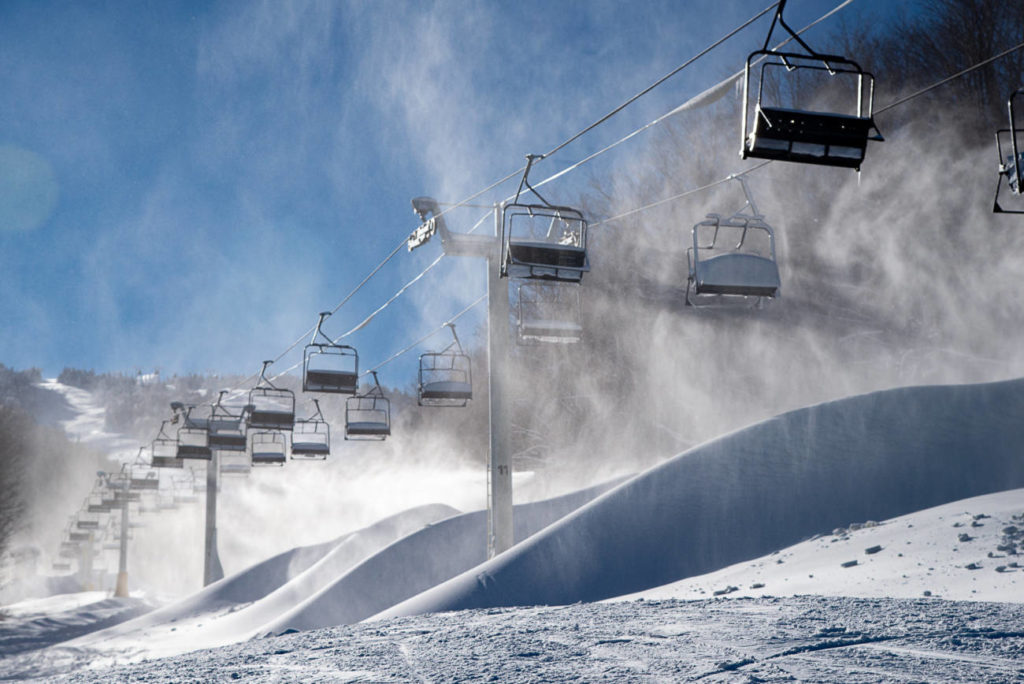
SNOWMAKING ON TRAILS
How do you decide which trails to focus making snow on?
For starters, let’s look at the trail map. As the map sits below, the left side is the east, and the right side is the west.
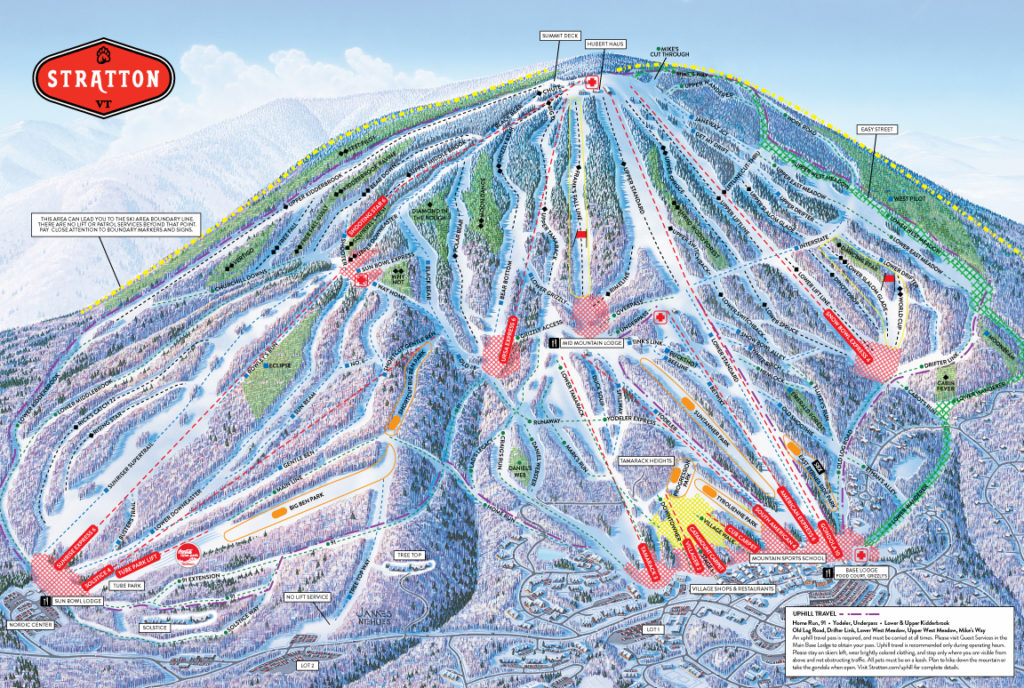
Anyone who has ridden the gondola from the base to the summit in one shot, even in the summer, knows that as you gain elevation, temperatures drop (most of the time). With that, the first snowmaking takes place close to the summit, usually mid-mountain or higher.
Next, the sun rises to the east. So at the warmest parts of the day, the east side of Stratton has the most direct sunlight on it. So what does the Ops team do? Start on the west side of the mountain. For our opening, this means trails like Mike’s Way, Upper Spruce, Drifter, Drifter Link, Janeway Junction, Slalom Glade and more.
As temperatures drop, snowmaking picks up, and we connect these upper west side trails to the base area, then begin to work out way east through Frank’s Fall Line, Black Bear, Grizzly Bear and eventually into the Sun Bowl and Kidderbrook. Mother Nature then kicks in to get the glades opened up, and before you know it there are 670 magnificent skiable acres to choose from each run.
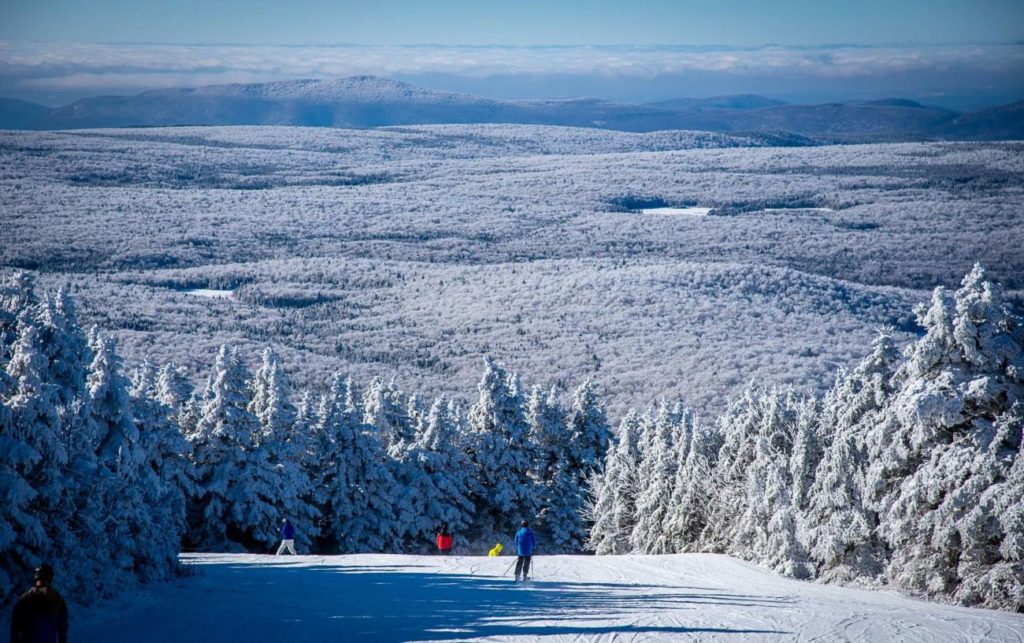
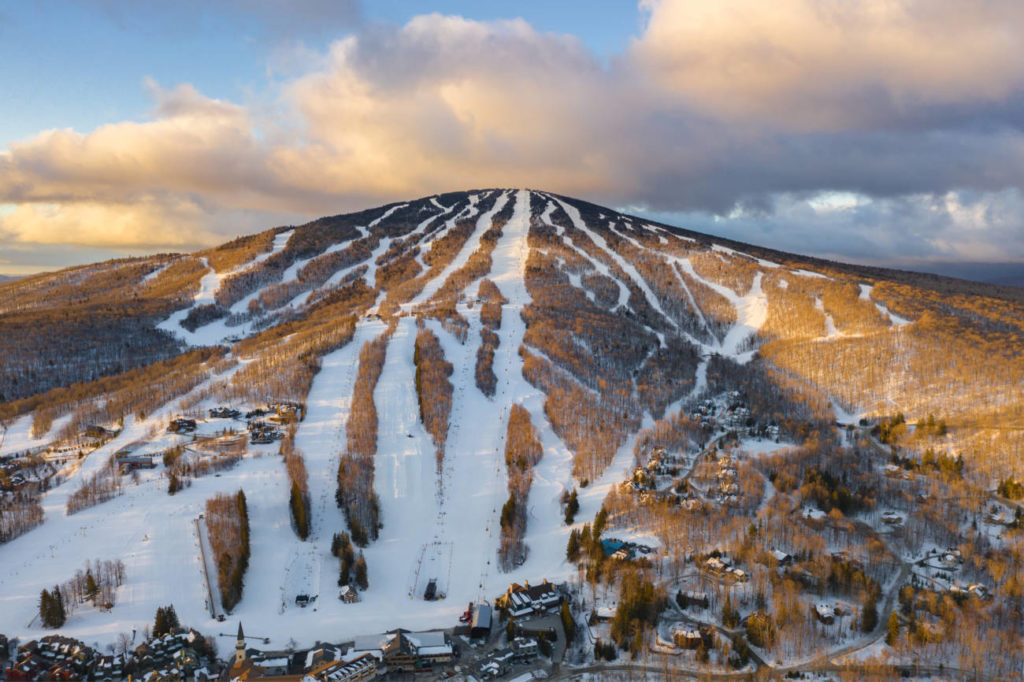
Excited for the winter? Check out What’s New at Stratton for Winter 21/22.
Posted November 18, 2021 by Andrew Kimiecik
